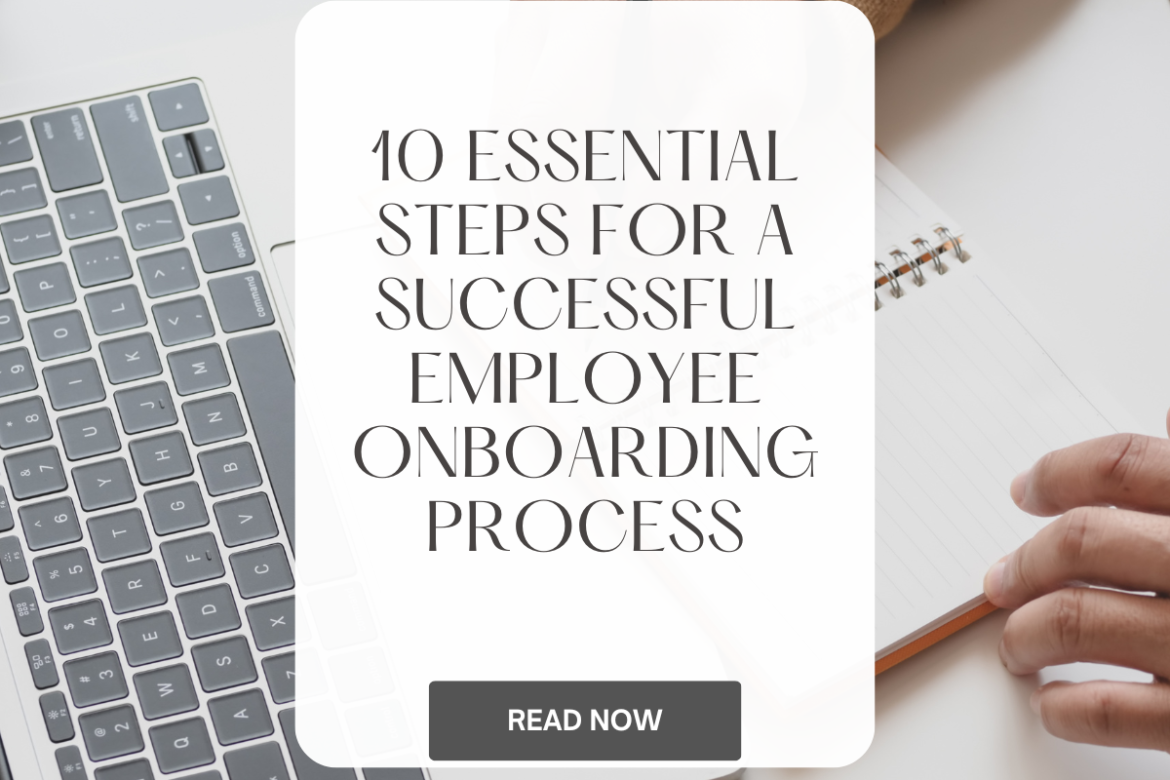Introduction: The employee onboarding process is a critical phase that sets the tone for a new employee’s experience in the organization. A well-executed onboarding process can lead to higher employee engagement, faster integration, and improved retention rates. In this article, we will explore the ten essential steps that HR professionals should follow to ensure a successful employee onboarding process.
- Preparing a Warm Welcome: Before the employee’s first day, HR should reach out to provide a warm welcome, share necessary paperwork, and provide any pre-boarding materials. This sets a positive tone and reduces anxiety for the new employee.
- Streamlining Administrative Tasks: Efficiently handling administrative tasks such as paperwork, benefits enrollment, and payroll forms is crucial. Streamline these processes to save time for both HR and the new employee, utilizing digital solutions where possible.
- Providing an Organizational Overview: Offering an overview of the organization’s history, mission, values, and culture helps new employees understand the company’s purpose and align their expectations.
- Setting Clear Expectations: Clearly communicate the employee’s role, responsibilities, and performance expectations. This clarity sets the foundation for success and helps employees understand their objectives from the start.
- Assigning a Buddy or Mentor: Assigning a buddy or mentor to new employees provides them with a go-to person for questions, guidance, and support. This connection helps foster relationships and enhances the onboarding experience.
- Providing Proper Training: Deliver comprehensive training to equip new employees with the necessary knowledge and skills to perform their roles effectively. Offer a blend of formal training, online resources, and hands-on experiences tailored to their specific needs.
- Introducing the Team: Organize team introductions to help new employees familiarize themselves with their colleagues. Encourage team members to reach out and make the new employee feel welcomed and included.
- Facilitating Socialization Opportunities: Arrange social activities or team-building events to foster connections between new hires and existing employees. This helps create a sense of belonging and strengthens relationships within the organization.
- Regular Check-ins and Feedback: Schedule regular check-ins with new employees to address any concerns, provide feedback, and gauge their progress. These check-ins demonstrate that their growth and development are valued by the organization.
- Continuous Development and Support: Support the ongoing growth and development of new employees by offering learning opportunities, mentoring programs, and career development resources. This investment in their professional growth fosters long-term engagement and loyalty.
Conclusion: A well-designed and executed employee onboarding process is crucial for new hires to feel welcomed, supported, and engaged from day one. By following these ten essential steps, HR professionals can create a successful onboarding experience that sets the stage for long-term success, employee satisfaction, and retention. Ultimately, an effective onboarding process contributes to building a strong and motivated workforce.
Grow your HR Career, Join us to Learn your HR Courses
Next Innovation Asia, India’s Leading HR Institute in Chrompet, Chennai

